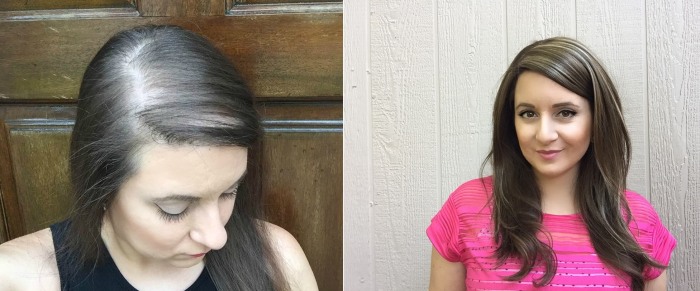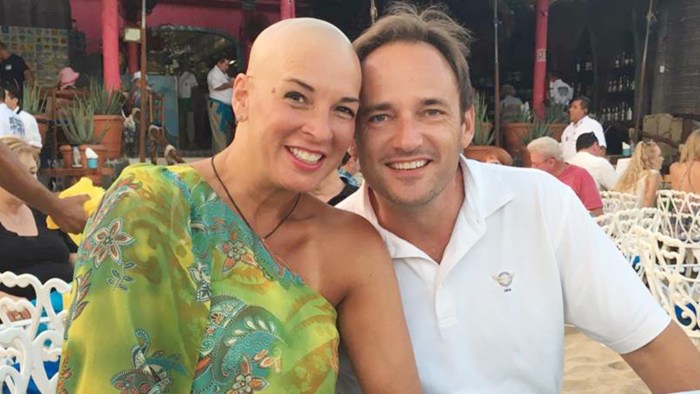Lauren Engle was just 28 when she noticed her hair falling out. As her strands got thinner, her part line widened and her ponytail shrunk to the thickness of a pencil. When she saw more scalp showing, she knew she had a problem.
Engle, who lives in Dallas, Texas, is far from alone. Millions of women in the U.S. suffer from hair loss, caused by genes, age or alopecia areata. In Engle’s case, the culprit was unexplained female pattern baldness.

Contents
Women reveal what it’s like to experience hair loss
PLAY VIDEO – 5:01
Women reveal what it’s like to experience hair loss
PLAY VIDEO – 5:01
“There’s tons of us out there, but it’s not spoken about,” Engle, 35, who writes about her experience in the Corner of Hope & Mane blog, told TODAY.
“It’s really sad for women. Their hair is oftentimes their crowning glory. That’s what we do to make ourselves look different, feel beautiful … Everything in the media is always women with long, flowing hair and we don’t have that, so there’s a lot of shame.”
 Courtesy Lauren Engle
Courtesy Lauren Engle
August is National Hair Loss Awareness Month — an effort to bring attention to a condition that can cause “dramatic and devastating” emotions in patients, dealing a blow to their self-esteem, body image and self-confidence, the American Academy of Dermatology notes.
A thinning mane can be challenging for anyone since hair is associated with identity, sexuality, age and mortality, but it’s definitely harder for women, said Dr. Marc Glashofer, a hair loss expert with The Dermatology Group in West Orange, New Jersey.
“For a man to have a bald head or even a shaved head, it’s so common. For women, there’s still a lot of social stigma to it and it’s tougher to accomplish that confidently,” Glashofer said.
Alopecia areata
When it comes to hair loss, a big culprit is alopecia areata, an auto-immune condition in which the body’s immune system attacks its own cells instead of bacteria and viruses. In the case of alopecia areata, it targets hair follicles, Glashofer said.
Almost 7 million people in the U.S. have or will develop the condition, according to the National Alopecia Areata Foundation.
Both genders can get it, though it’s a bit more common in women, Glashofer noted. The trigger is a mystery.
Margaret Staib, 49, still remembers the questions swirling in her head when she was diagnosed.
“Why me? What did I eat? Will it grow back? Will my husband still love me and find me attractive?” the Long Island, New York, businesswoman recalls thinking. “Our disease does not ‘hurt’ physically; it’s an emotional and mental disease once you get it.”
 Courtesy of Margaret Staib
Courtesy of Margaret Staib
Treatment: Right now, there’s no treatment for alopecia areata that’s sustainable or consistently works for everyone, Glashofer said.
That might change in the next couple of years as researchers develop new pills and creams based on a class of compounds called JAK inhibitors that might be the first official medications specifically for alopecia areata. “It’s very exciting that that’s on the horizon,” he said. “We feel like we’re on the precipice of some real success.”
These drugs were originally used for rheumatoid arthritis and, by coincidence, it was discovered that some patients who took it for that condition and who also had alopecia aerata grew their hair back. Clinical trials are underway to see how safe and effective this option is, the National Alopecia Areata Foundation says.
For now, therapies include cortisone injections directly into the bald patches; topical cortisone; Minoxidil — known to many people under the brand name Rogaine; and anthralin cream. A less-widely available option is topical immunotherapy: certain chemicals applied to the scalp can trigger an allergic rash, which alters the immune response, NAAF notes.
[Source”cnbc”]

